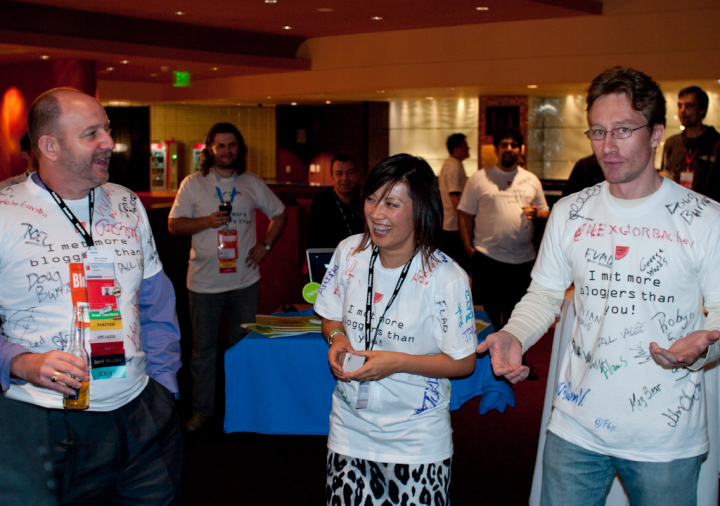Nagios authentication with Active Directory aligns with user management consolidation policies in most organizations. This post explains how to setup Nagios authentication with Active Directory, while using Apache as web server.
mod_authz_ldap is an apache LDAP authorization module. This can be used to authorize a user based on an LDAP query.
Install mod_authz_ldap.
# yum install mod_authz_ldap
Make sure that the module is loaded in apache:
/etc/httpd/conf.d/authz_ldap.confLoadModule authz_ldap_module modules/mod_authz_ldap.so
To query LDAP, ldapsearch can be used. Install following package:
# yum install openldap-clients
Active Directory will not allow an LDAP client to operate against it anonymously, therefore a user DN and password with minimum permission is required.
For example: CN=Nagios User,CN=Users,DC=hq,DC=CORP,DC=abc,DC=org
The CN attribute corresponds to the “Display Name” of the account in Active Directory.
ldapsearch can be used to query LDAP server. In this case Active Directory.
In this example, we will look at how to enable access to all the members in ‘Pythian’ group who in turn have membership in ‘Nagios Admins’ group.
To find the members of Pythian group, run following command:
# ldapsearch -x -LLL -D ‘CN=Nagios User,CN=Users,DC=hq,DC=CORP,DC=abc,DC=org’ -W -H ldap://192.168.1.1 -b ‘CN=Pythian,OU=Internal Groups,DC=hq,DC=CORP,DC=abc,DC=org’
Enter LDAP Password:
dn: CN=Pythian,OU=Internal Security Groups,DC=hq,DC=CORP,DC=abc,DC=org
objectClass: top
objectClass: group
cn: pythian
description: General Pythian group.
member: CN=Joseph Minto,OU=Service Consultants,OU=Consultants,OU=User Accounts,DC=hq,DC=CORP,DC=abc,DC=org <—————
member: CN=Test All,OU=Service Consultants,OU=Consultants,OU=User Accounts,DC=hq,DC=CORP,DC=abc,DC=org <—————
distinguishedName: CN=pythian,OU=Internal Security Groups,DC=hq,DC=CORP,DC=abc,DC=org
instanceType: 4
whenCreated: 20120720203444.0Z
whenChanged: 20150611152516.0Z
uSNCreated: 11258263
memberOf: CN=OA Admins,OU=Internal Security Groups,DC=hq,DC=CORP,DC=abc,DC=org
uSNChanged: 128023795
name: pythian
objectGUID:: XY68X44xZU6KQckM3gckcw==
objectSid:: AQUAAAAAAAUVAAAAly2pALIyHF9ZQexpa+IAAA==
sAMAccountName: pythian
sAMAccountType: 268435456
groupType: -2147483646
objectCategory: CN=Group,CN=Schema,CN=Configuration,DC=CORP,DC=abc,DC=org
dSCorePropagationData: 20140718174533.0Z
dSCorePropagationData: 20121012140635.0Z
dSCorePropagationData: 20120823115415.0Z
dSCorePropagationData: 20120723133138.0Z
dSCorePropagationData: 16010714223649.0Z
To find the details of a user account, following command can be used:
# ldapsearch -x -LLL -D ‘CN=Nagios User,CN=Users,DC=hq,DC=CORP,DC=abc,DC=org’ -W -H ldap://192.168.1.1 -b ‘CN=Pythian,OU=Internal Groups,DC=hq,DC=CORP,DC=abc,DC=org’ -s sub “sAMAccountName=jminto”
Enter LDAP Password:
dn: CN=Joseph Minto,OU=Service Consultants,OU=Consultants,OU=User Accounts,DC= hq,DC=CORP,DC=abc,DC=org
objectClass: top
objectClass: person
objectClass: organizationalPerson
objectClass: user
cn: Joseph Minto
sn: Minto
c: US
l: Arlington
st: VA
description: 09/30/15 – Consultant – Pythian
postalCode: 22314
telephoneNumber: 1 866 – 798 – 4426
givenName: Joseph
distinguishedName: CN=Joseph Minto,OU=Service Consultants,OU=Consultants,OU=User Accounts,DC=hq,DC=CORP,DC=abc,DC=org
instanceType: 4
whenCreated: 20131203160403.0Z
whenChanged: 20150811045216.0Z
displayName: Joseph Minto
uSNCreated: 62354283
info: sponsored by: sam@abc.org
memberOf: CN=Pythian,OU=Internal Security Groups,DC=hq,DC=CORP,DC=abc,DC=org
memberOf: CN=Nagios Admins,OU=Nagios Groups,OU=AppSecurityGroups,DC=hq,DC=CORP,DC=abc,DC=org <————-
uSNChanged: 137182483
co: United States
name: Joseph Minto
objectGUID:: uh9bC/ke6Uap0/dUk9gyLw==
userAccountControl: 512
badPwdCount: 0
codePage: 0
countryCode: 840
badPasswordTime: 130360542953202075
lastLogoff: 0
lastLogon: 130844674893200195
scriptPath: callsl.bat
logonHours:: ////////////////////////////
pwdLastSet: 130305602432591455
primaryGroupID: 513
objectSid:: AQUAAAAAAAUVAAAAly2pALIyHF9ZQexphO8AAA==
adminCount: 1
accountExpires: 130881456000000000
logonCount: 116
sAMAccountName: jminto
sAMAccountType: 805306368
userPrincipalName: jminto@hq.CORP.abc.org
objectCategory: CN=Person,CN=Schema,CN=Configuration,DC=CORP,DC=abc,DC=org
dSCorePropagationData: 20150320162428.0Z
dSCorePropagationData: 20140718174545.0Z
dSCorePropagationData: 20131203161019.0Z
dSCorePropagationData: 16010101181632.0Z
lastLogonTimestamp: 130837423368430625
mail: jo@pythian.com
Following are the ldapsearch switches used above:
-x Use simple authentication instead of SASL.
-L Search results are display in LDAP Data Interchange Format detailed in ldif(5). A single -L restricts the output to LDIFv1.
A second -L disables comments. A third -L disables printing of the LDIF version. The default is to use an extended version of LDIF.-D binddn
Use the Distinguished Name binddn to bind to the LDAP directory. For SASL binds, the server is expected to ignore this value.-W Prompt for simple authentication. This is used instead of specifying the password on the command line.-H ldapuri
Specify URI(s) referring to the ldap server(s); a list of URI, separated by whitespace or commas is expected; only the protocol/host/port fields are
allowed. As an exception, if no host/port is specified, but a DN is, the DN is used to look up the corresponding host(s) using the DNS SRV records,
according to RFC 2782. The DN must be a non-empty sequence of AVAs whose attribute type is “dc” (domain component), and must be escaped according to RFC
2396.-b searchbase
Use searchbase as the starting point for the search instead of the default.-s {base|one|sub|children}
Specify the scope of the search to be one of base, one, sub, or children to specify a base object, one-level, subtree, or children search. The default is
sub. Note: children scope requires LDAPv3 subordinate feature extension.
In the nagios configuration in apache, parameters in mod_authz_ldap can be used to validate a user like we used in ldapsearch:
# cat /etc/httpd/conf.d/nagios.conf
# SAMPLE CONFIG SNIPPETS FOR APACHE WEB SERVER
# Last Modified: 11-26-2005
#
# This file contains examples of entries that need
# to be incorporated into your Apache web server
# configuration file. Customize the paths, etc. as
# needed to fit your system.ScriptAlias /nagios/cgi-bin/ “/usr/lib64/nagios/cgi-bin/”Options ExecCGI
AllowOverride None
Order allow,deny
Allow from all
AuthName “Nagios Access”
AuthType BasicAuthzLDAPMethod ldap
AuthzLDAPServer “192.168.1.1”
AuthzLDAPBindDN “CN=Nagios User,CN=Users,DC=hq,DC=CORP,DC=abc,DC=org”
AuthzLDAPBindPassword “typepasswordhere”
AuthzLDAPUserKey sAMAccountName
AuthzLDAPUserBase “CN=Pythian,OU=Internal Groups,DC=hq,DC=CORP,DC=abc,DC=org”
AuthzLDAPUserScope subtree
AuthzLDAPGroupKey cn
AuthzLDAPMemberKey member
AuthzLDAPSetGroupAuth ldapdn
require group “Nagios Admins”Alias /nagios “/usr/share/nagios/html”Options None
AllowOverride None
Order allow,deny
Allow from all
AuthName “Nagios Access”
AuthType BasicAuthzLDAPMethod ldap
AuthzLDAPServer “192.168.1.1”
AuthzLDAPBindDN “CN=Nagios User,CN=Users,DC=hq,DC=CORP,DC=abc,DC=org”
AuthzLDAPBindPassword “typepasswordhere”
AuthzLDAPUserKey sAMAccountName
AuthzLDAPUserBase “CN=Pythian,OU=Internal Groups,DC=hq,DC=CORP,DC=abc,DC=org”
AuthzLDAPUserScope subtree
AuthzLDAPGroupKey cn
AuthzLDAPMemberKey member
AuthzLDAPSetGroupAuth ldapdn
require group “WUG Admins”
In the above configuration, mod_authz_ldap uses parameters like ldapserver, binddn, bindpassword, scope, searchbase etc to see if the supplied user credentials can be found in the Active Directory. It would also check to see if the user is a member of ‘Nagios Admins’ group.
Restarting apache would start enable Active Directory based authentication for Nagios.
Discover more about our expertise in Infrastructure Management.
 Many of you are coming to San Francisco next week for Oracle OpenWorld 2015 and many of you have already booked time on your calendars on Wednesday evening before the appreciation event. You are right — the Annual Oracle Bloggers Meetup, one of your favorite events of the OpenWorld, is happening at usual place and time!
Many of you are coming to San Francisco next week for Oracle OpenWorld 2015 and many of you have already booked time on your calendars on Wednesday evening before the appreciation event. You are right — the Annual Oracle Bloggers Meetup, one of your favorite events of the OpenWorld, is happening at usual place and time!




